The National Natural Science Foundation of China (NSFC) has released the ‘Announcement on the Review Results of Concentrically Received Applications for the 2025 National Natural Science Foundation Projects’. Liaoning University (LNU) was approved for 18 National Natural Science Foundation projects, including one Key Project, six General Projects, and 11 Young Scientists Fund Projects. The table summarizes each project, and they are also detailed below.
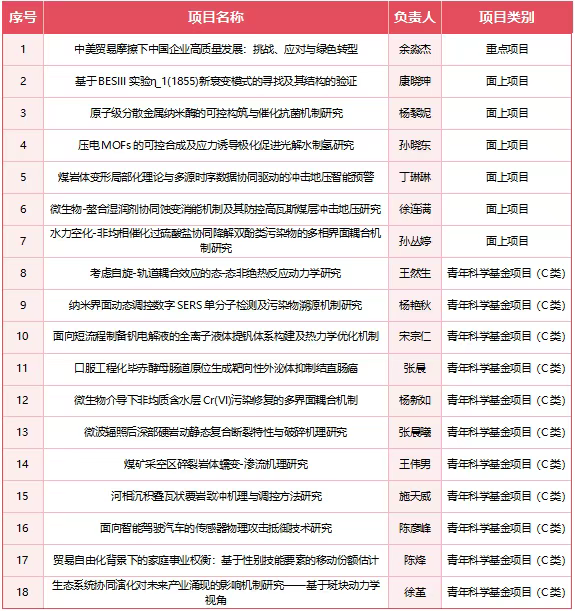
Key Project
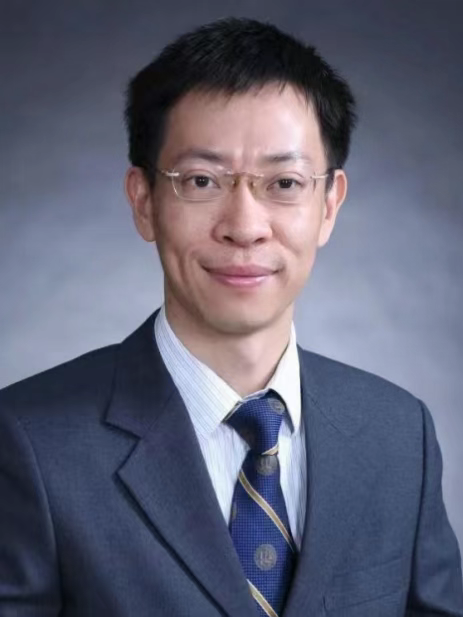
Project Name: High-quality Development of Chinese Enterprises under the China-US Trade Friction: Challenges, Responses and Green Transformation
Project Type: Key Project
Profile of the Project Leader: Yu Miaojie, Deputy Secretary of the Party Committee and President of LNU, Fellow of the International Economic Association, Distinguished Professor of National-level Talent Projects, recipient of the National Science Foundation for Distinguished Young Scholars, Beijing Outstanding Young Scientist, Boya Distinguished Professor at Peking University, a deputy to the 14th National People’s Congress, a special supervisor for the National Commission of Supervision, and Associate Editor of the top international economics journal Economic Journal. He not only enjoys the State Council Special Government Allowance, but is also a highly cited researcher in the top 1% globally in economics and business, and is the only Chinese scholar to date to have won the Royal Economic Society Prize.
Project Introduction: Against the backdrop of gradual transformation in the global political and economic order, some countries, led by the United States, have introduced a series of industrial policies, trade policies, and environmental regulations based on their own economic interests, represented by the “tariff war”, the “small yard, high fence” strategy, the CHIPS and Science Act, and the EU’s Carbon Border Adjustment Mechanism (CBAM). These pose new challenges to China’s high-quality economic development and the realization of the “dual circulation” new development pattern. In this context, this project takes “High-Quality Development of Chinese Enterprises Under China-US Trade Frictions: Challenges, Responses, and Green Transformation” as its research theme. Based on current endogenous industrial policies, trade policies, and environmental regulations, and comprehensively utilizing methods such as structural estimation, counterfactual analysis, machine learning, and traditional econometric analysis, it aims to quantitatively analyze the practical challenges faced by Chinese enterprises in achieving high-quality development, propose corresponding response measures and solutions, and provide empirical support and policy guidance for the green transformation development of Chinese enterprises.
General Projects
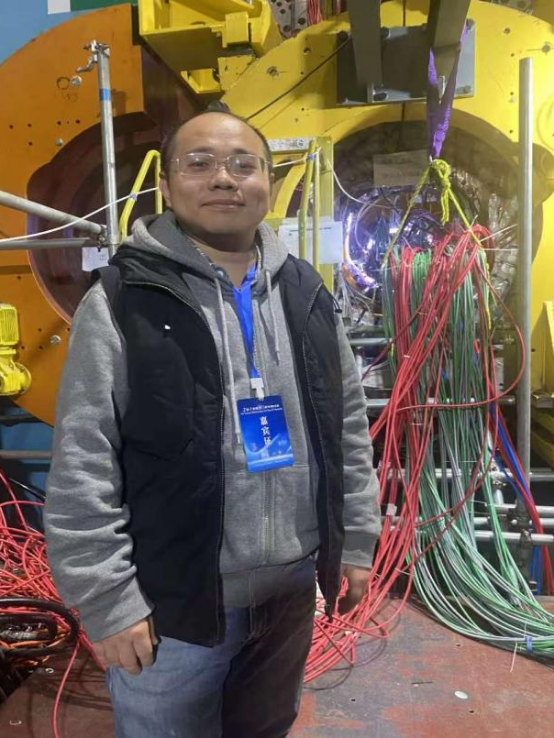
Project Name: Search for New Decay Modes and Validation of the Structure of η_1(1855) Based on BESIII Experiment
Project Type: General Project
Profile of the Project Leader: Kang Xiaoshen, PhD in Science, is an associate professor and postgraduate supervisor in the School of Physics. He is a recipient of the Zhao Zhongyao Research Grant and was awarded the third prize of the Liaoning Provincial Undergraduate Teaching Achievement Award (ranked third among 11 contributors). Representing LNU, he is a member of the BESIII Collaboration on high-energy physics experiments and serves on the BESIII Institutional Board (IB). He also participates in the preparatory international collaboration for China’s next-generation large-scale scientific facility, the Super Tau-Charm Facility (STCF), as well as in China’s next-generation electron-ion collider R&D project and deep-space experimental programs. He has led six national and provincial-level research projects and has published dozens of academic papers in top-tier physics journals such as Physical Review Letters, Physical Review D, and Chinese Physics C.
Project Introduction: The BESIII experiment first discovered the hybrid state candidate η_1 with a quantum number of 1^−+ (1855). However, different theoretical models have disputes over its structure, suggesting that it might be a hybrid state, a four-quark state or a molecular state. This project uses BESIII experimental data to conduct a series of experimental studies on the hybrid state candidate η_1(1855) with a quantum number of 1^−+, in search of new decay modes for η_1(1855), thereby providing crucial experimental evidence for determining its structure.
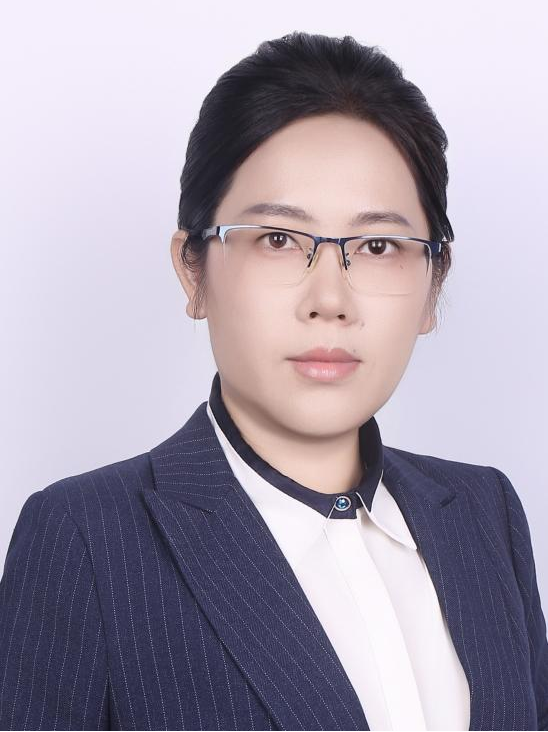
Project Name: Research on the Controllable Construction and Catalytic Antibacterial Mechanism of Atomic-level Dispersed Metal Nanozymes
Project Type: General Project
Profile of the Project Leader: Yang Lini, PhD in Science, is a professor and doctoral supervisor in the College of Chemistry. She has been selected into the Xingliao Talents Program for top young scientists, listed at the Hundred-Talent level of the Provincial Hundred-Thousand-Ten Thousand Talents Project, recognized as a Leading Talent among Shenyang’s high-level professionals, and designated as a Young Top-Talent of LNU. She has authored more than 40 papers in journals such as Angewandte Chemie International Edition and Applied Catalysis B: Environment and Energy. She has also led three projects funded by the National Natural Science Foundation of China and five provincial and ministerial-level projects, and holds eight authorized Chinese invention patents, two of which have been transferred to industry.
Project Introduction: This project focuses on the controllable construction of high-performance metal nanozymes. Defect-rich graphene will be employed as a support, exploiting the strong interaction between its surface carbon vacancies and metal species to form robust metal–carbon bonds. This strategy will enable the precise fabrication of a series of atomically dispersed single- and multi-component metal nanozymes, whose catalytic and antibacterial activities will be systematically investigated. By integrating comprehensive characterization techniques with theoretical calculations, the project aims to elucidate the catalytic mechanism by which defect-rich graphene stabilizes atomically dispersed metal nanozymes, laying a solid theoretical foundation for the development of novel and highly efficient atomically dispersed metal nanozymes.
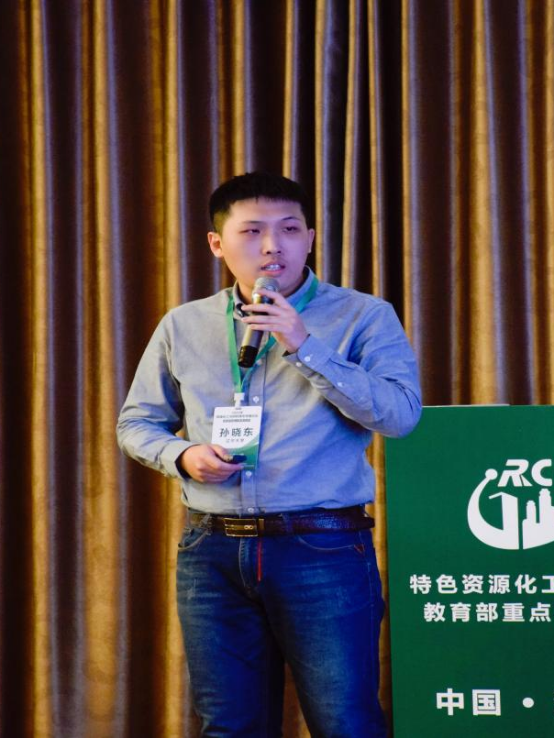
Project Name: Research on Controllable Synthesis of Piezoelectric MOFs and Stress-induced Polarization Promoting Water Splitting for Hydrogen Production
Project Type: General Project
Profile of the Project Leader: Sun Xiaodong, PhD in Science, is an assistant research fellow and postgraduate supervisor in the College of Chemistry. His research focuses on the rational design of crystalline porous materials and their applications in polarized-light photocatalysis. He has published more than 50 SCI-indexed papers in leading international journals such as Nature Commun., Angew. Chem. Int. Ed., and Adv. Mater., and his work has earned him an h-index of 29. He is a recipient of the Royal Society of Chemistry Horizon Prize and the Second Prize of the Liaoning Provincial Natural Science Academic Achievement Award. Dr. Sun serves as a Young Editorial Board Member for high-impact journals including Nano-Micro Letters and Carbon Neutralization. He has repeatedly been awarded grants from the National Natural Science Foundation of China and the Liaoning Provincial Natural Science Foundation.
Project Introduction: Enhancing the photogenerated charge carrier separation efficiency in metal-organic frameworks (MOFs) remains a critical challenge that must be overcome to advance their application in photocatalytic water splitting for hydrogen production. This project aims to construct piezoelectric MOFs and regulate their piezoelectric properties, adopting a piezoelectrically assisted photocatalytic strategy. By establishing a piezoelectric polarization field within the material, the project intends to achieve efficient charge separation, thereby improving the overall efficiency of hydrogen production through water splitting. While providing deep insights into the mechanism of piezocatalytic-photocatalytic water splitting in MOFs, this project will also offer important theoretical guidance for the design of MOF-based piezoelectric catalysts for photocatalytic hydrogen evolution.
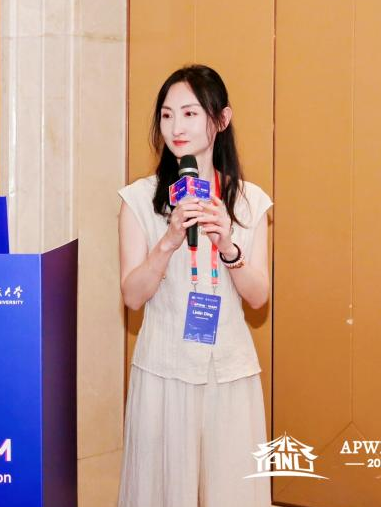
Project Name: Coal-Rock Mass Deformation Localization Theory and Multi-Source Time-Series Data Synergy-Driven Intelligent Early Warning of Rockburst
Project Type: General Project
Profile of the Project Leader: Ding Linlin, PhD in Engineering, is a professor and doctoral supervisor in the Faculty of Information. She has been selected for the Liaoning Provincial Xingliao Talents Program for distinguished young scholars, the Liaoning Provincial Hundred, Thousand and Ten-Thousand Talents Project, the Shenyang Program for Young and Middle-aged Scientific and Technological Innovators, and the first cohort of LNU’s Young Top-Talent Initiative. She serves as a Young Associate Editor for Frontiers of Computer Science, a China Computer Federation-recommended Class-B journal, and as an editorial board member of the Journal of Disaster Prevention and Mitigation. To date, she has authored 78 refereed papers in leading domestic and international journals and conferences, published one scholarly monograph and two textbooks. Dr. Ding has presided over five national-level research projects, six provincial-level projects, and two industry-sponsored projects, and has received five scientific and technological awards, including the Second Prize of the Emergency Management Science and Technology Innovation Award.
Project Introduction: China’s deep-level coal mining has long been plagued by frequent rock-burst disasters. Existing early-warning systems suffer from ambiguous theory, fragmented knowledge, multi-source data, and rigid architectures, leaving physical understanding and data intelligence largely decoupled. This project therefore concentrates on “intelligent rock-burst early-warning driven by the synergetic integration of coal-rock deformation-localization theory and multi-source time-series data”. The project will construct a temporally hierarchical knowledge graph, develop a spatio-temporal graph neural network and its predictive model, and build an integrated platform that unifies “data perception–situation awareness–intelligent decision-making”. The expected outcomes will break the bottleneck between physical mechanisms and data-driven methods, providing critical support for the goal of ‘zero rock-burst’ and the safe extraction of deep mineral resources.
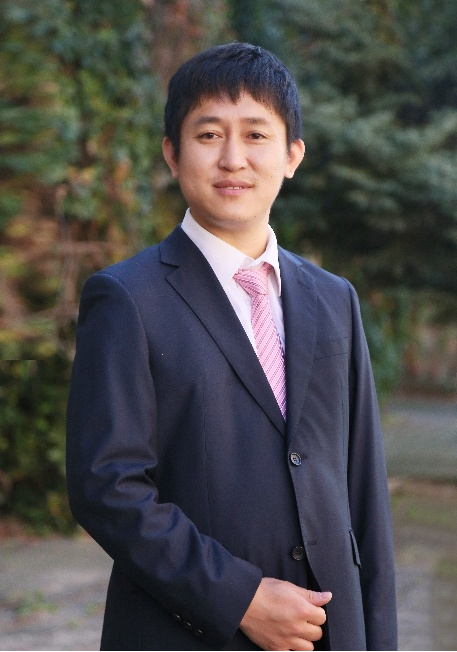
Project Name: Research on the Synergistic Alteration Energy Dissipation Mechanism of Microbial-Chelating Wetting Agents and Its Control of Rockburst in High-Gas Coal Seams
Project Type: General Project
Profile of the Project Leader: Xu Lianman, PhD in Engineering, is an associate professor and postgraduate supervisor at the School of Environment. Selected for the Liaoning Provincial Xingliao Talents Program for distinguished young scholars, he currently serves as Secretary-General of the Rock-Burst Committee of the Chinese Society for Rock Mechanics and Engineering. His research focuses on rock-burst prevention, mine-environment remediation, and roadway-support technologies. He has led one project funded by the National Natural Science Foundation of China, five provincial and ministerial-level projects, and more than ten enterprise innovation projects. He has authored over 30 academic papers, 17 of which are indexed by SCI/EI as first or corresponding author. He has also been granted more than ten invention patents. He has received seven provincial and ministerial-level science and technology awards, one second-class National Teaching Achievement Award, and three provincial teaching achievement prizes.
Project Introduction: To overcome the water-injection challenges posed by deep high-gas coal seams characterized by high gas content, high in-situ stress and extremely low permeability, the project will develop a multifunctional chelating wetting agent and a bio-pore-extension technique that employs methane-oxidizing bacteria to enhance coal permeability and promote gas degradation. The project will investigate the seepage behavior of the microbe–wetting-agent system within coal and clarify the associated coal-damage mechanics, thereby elucidating the mechanism by which water injection suppresses rock bursts. An evaluation index system for the effectiveness of water-injection control will be established, and safety thresholds and classification standards will be proposed, offering a new integrated approach to the simultaneous prevention and control of both rock-burst and gas disasters.

Projection Name: Research on the Multiphase Interface Coupling Mechanism of Synergistic Degradation of Bisphenol Pollutants by Hydraulic Cavitation and Persulfate Oxidation
Project Type: General Project
Profile of the Project Leader: Sun Congting, PhD in Engineering, is a professor and doctoral supervisor at the School of Environment. Her research focuses on the treatment and disposal technologies of emerging contaminants and their underlying mechanisms. She has presided over 14 national and provincial-level vertical research projects. As the first or corresponding author, she has published 67 peer-reviewed papers in leading journals such as Water Research, Journal of Hazardous Materials, and Ultrasonics Sonochemistry. She holds six authorized invention patents, has published three monographs, and has participated in the formulation of one national standard, one industry standard, and five group standards. She has been selected as a member of the Youth Innovation Promotion Association of the Chinese Academy of Sciences, the “Hundred, Thousand, and Ten-Thousand Talents Project” of Liaoning Province (Thousand-Tier), and as a leading talent among Shenyang’s high-level professionals. She has received the Second Prize of the Jilin Province Natural Science Academic Achievement Award twice and the First Prize of the Natural Science Award from the Chinese Society of Particuology.
Project Introduction: This project aims to explore new theories and technologies for environmental pollution control by taking the synergistic degradation of bisphenol pollutants (BPs) in a combined hydrodynamic cavitation–heterogeneous catalytic persulfate system as the research target. Addressing the worldwide scientific frontier question of why the degradation efficiency of BPs is markedly enhanced in the dual-oxidation system, the project adopts the unique perspective of “micro/nano-bubble-assisted construction of multiphase interfacial reactions”, integrating macroscopic structural design with microscopic modulation of active sites. By unveiling the novel microscopic mechanism through which multiphase interfaces synergistically intensify the oxidative degradation of BPs and by proposing corresponding regulation strategies, the project seeks to achieve highly efficient BPs removal under low energy consumption, thereby opening new opportunities for the advancement of water-treatment technologies.
Young Scientists Fund Projects
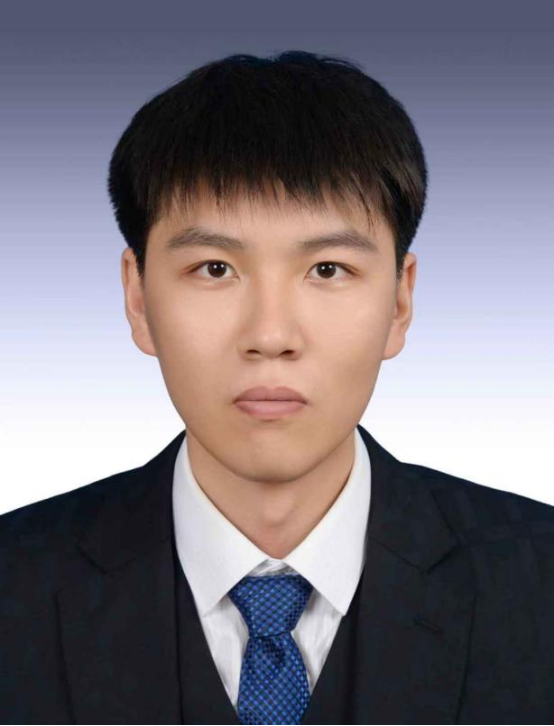
Project Name: Dynamics study of state-state non-adiabatic reactions considering spin-orbit coupling effects
Project Type: Youth Science Foundation Project (Class C)
Profile of the Project Leader: Wang Ransheng, PhD in Science, is a lecturer and undergraduate advisor at the School of Physics. His research focuses on small-molecule reaction dynamics and atomic- and molecular-collision spectroscopy. He has published seven high-impact SCI papers in his field, is the principal investigator of one national-level and one provincial-level project, and has participated in two additional national-level projects.
Project Introduction: At present, research on systems containing spin-orbit coupling effects, especially exploration at the quantum state level, is still in its infancy. However, in-depth research on such systems is of great scientific significance for revealing the applicability of the Bonn-Oppenheimer approximation in chemical reactions and the subtle role of electron angular momentum in reactions. Focusing on this difficult point, this project is dedicated to developing precise and efficient kinetic theories and computational methods to handle reaction systems involving spin-orbit coupling effects, with the aim of deeply analyzing the collision mechanism of reactions at the wave function level and thereby revealing quantum effects in chemical reactions.

Project Name: Research on Dynamic Regulation of Nanointerface Digital SERS Single-molecule Detection and Pollutant Traceability Mechanism
Project Type: Youth Science Foundation Project (Class C)
Profile of the Project Leader: Yang Yanqiu, PhD in Science, is a lecturer and undergraduate supervisor at the School of Physics, LNU. Her research centers on the design and synthesis of functional materials for surface-enhanced Raman scattering (SERS) sensing and the degradation of organic pollutants, complemented by theoretical calculations of Raman spectra. She has guided students to win one second-class prize at the National Physics Competition and two first-class prizes at the provincial level. As the corresponding author with Liaoning University as the first affiliation, she has published more than ten SCI-indexed papers. She currently leads one national-level and one provincial-level research project.
Project Introduction: This project is dedicated to developing the next-generation SERS detection technology to address the challenges of low sensitivity and significant matrix interference in the source tracing analysis of trace pollutants. The research team innovatively combined dynamic interface regulation with quantum spectroscopy theory. By constructing intelligent responsive core-shell materials and cross-scale simulation methods, they revealed the intrinsic mechanisms of molecular adsorption and signal enhancement under the influence of external fields, achieving single-molecular-level detection and precise identification of pollutants It provides an effective technical means for the in-situ analysis and traceability of trace targets in complex environmental systems.
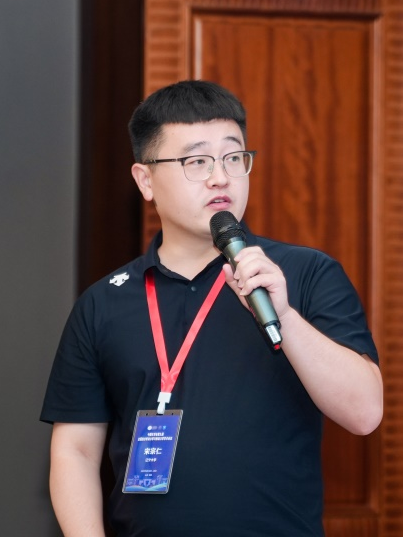
Project Name: Construction and thermodynamic optimization mechanism of a fully ionic liquid vanadium extraction system for short-process preparation of vanadium electrolyte
Project Type: Youth Science Foundation Project (Class C)
Profile of the Project Leader: Song Zongren, PhD in Science, is an assistant researcher and postgraduate supervisor at the College of Chemistry and has been recognized as a top-tier Talent among Shenyang’s high-level professionals. His research focuses on the synthesis and application of ionic liquids, the extraction and separation of rare and precious metals together with their thermodynamics, and the development of resin-based composite materials. He has authored more than 20 SCI-indexed papers in international journals such as ACS Sustainable Chemistry & Engineering, Fuel, and Journal of Environmental Chemical Engineering, and has applied for over 30 invention patents, of which more than 10 have been granted. He is the principal investigator of one national-level project, two provincial and ministerial-level projects, one municipal project, and three industry-sponsored horizontal projects.
Project Introduction: In view of the high acidity of vanadium-containing acid leaching solutions in China and the drawbacks of the traditional organic solvent vanadium extraction system, such as volatility and high water solubility, this project constructs a vanadium extraction ionic liquid system with bifunctive sites. The thermodynamic analysis of the extraction process of the all-ionic liquid vanadium extraction system was conducted based on Pitzer’s electrolyte solution theory. The interdependence between relevant thermodynamic parameters and process parameters was established to further optimize the vanadium extraction process of the all-ionic liquid system and achieve the short-process and efficient preparation of vanadium electrolyte. This project provides theoretical support for the short-process preparation of vanadium electrolyte and is of great significance for promoting the commercialization process of all-vanadium REDOX flow batteries.

Project Name: Oral Delivery of Engineered Pichia pastoris for In-situ Production of Targeted Exosomes to Suppress Colorectal Cancer
Project Type: Youth Science Foundation Project (Class C)
Profile of the Project Leader: Zhang Chen, PhD in Engineering, is a lecturer and postgraduate supervisor at the School of Life Sciences, LNU. She earned both her PhD and MS in Biochemical Engineering from Tianjin University, and her BS in Bioengineering from Jiangnan University, receiving the National Scholarship, Outstanding Thesis Award, and Outstanding Graduate honors. Since joining Liaoning University in 2024, she has been awarded the Liaoning Provincial Science and Technology Joint Program project and recognized as a Shenyang Top-Tier Talent (Category D). To date, she has published eight first-author SCI papers in journals including Coordination Chemistry Reviews (IF 20.3), Small (IF 13), Journal of Controlled Release (IF 10.5), Advanced Healthcare Materials (IF 10), ACS Applied Materials & Interfaces (IF 8.3), International Journal of Biological Macromolecules (IF 7.7), Applied Surface Science (IF 6.3), and BioMedical Engineering and Materials (IF 15.5).
Project Introduction: The occurrence of colorectal cancer is closely related to gene mutations. The CRISPR/Cas9 system can precisely correct mutant genes, making it promising for application in the treatment of colorectal cancer. However, how to enable the CRISPR/Cas9 system to penetrate the intestinal barrier and ensure its gene editing activity is a key scientific issue that urgently needs to be addressed in the development of oral colorectal cancer gene therapy drugs. This project intends to adopt synthetic biology strategies, using specific promoters to induce Pichia Pastoris X33 strain to express the CRISPR/Cas9 system and make it secrete exosomes that can penetrate the intestinal mucosa and epithelial cell layer, which also have the function of specifically targeting intestinal tumor cells. This research is expected to provide support for the development of oral gene therapy drugs.
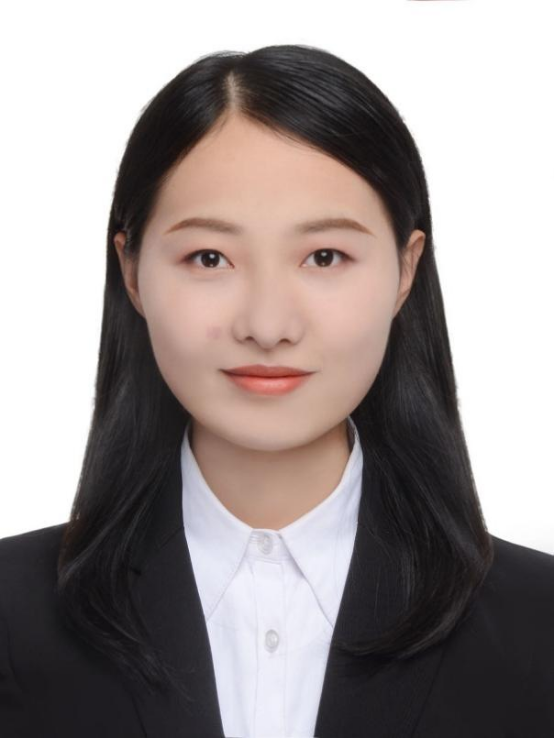
Project Name: A multi-interface coupling mechanism for Cr (VI) pollution remediation in heterogeneous aquifers mediated by microorganisms
Project Type: Youth Science Foundation Project (Class C)
Profile of the Project Leader: Yang Xinru, PhD in Engineering, is a lecturer and undergraduate supervisor at the School of Environment. Her research focuses on the control and remediation of groundwater contamination and the in-situ bioremediation of heavy-metal pollution. She currently leads one open project funded by a State Key Laboratory and two provincial-level projects, and has participated in several national and industry-sponsored research programs. To date, she has published more than ten SCI-indexed papers.
Project Introduction: The mass transfer in the low-permeability zone of heterogeneous aquifers is restricted, often resulting in poor remediation effects. This project systematically explores the core challenges of in-situ biological stimulation technology in the remediation of heterogeneous aquifers from three aspects: microbial interface effects, pollutant reduction mechanisms, and main control factors. The projects aims to clarify the growth, colonization and action behavior of microorganisms at heterogeneous interfaces, to define the differences in Cr (VI) reduction pathways on both sides of the interface and their driving forces, to reveal the applicable scope and process parameters of in-situ bioremediation technology, and to comprehensively evaluate the applicable conditions of in-situ biological stimulation technology. All provide new ideas and strong technical support for practical engineering applications.

Project Name: Research on the Dynamic and Static Composite Fracture Characteristics and Fragmentation Mechanism of Deep Hard Rock after Microwave Irradiation
Project Type: Youth Science Foundation Project (Class C)
Profile of the Project Leader: Zhang Chenxi, a Doctor of Engineering from Central South University, is an associate professor at the Institute of Disaster Rock Mechanics, a member of the Rock Fragmentation Engineering Professional Committee of the Chinese Society for Rock Mechanics and Engineering, and a top talent in Shenyang. His research focuses on deep rock mechanics and dynamic disaster prevention and control. He has presided over three national and provincial-level research projects, participated in the compilation of one industry standard as a main drafter, and applied for two invention patents. More than 20 papers have been published, with a total citation of over 700 times. More than 10 papers have been published as the first or corresponding author in authoritative journals such as Int J Rock Mech Min Sci and Journal of China Coal Society. Three papers have been selected as high PCSI papers, highly cited papers and highly downloaded papers of China National Knowledge Infrastructure (CNKI). He is a top 5% of highly cited scholars of CNKI in 2024. He serves as a young editorial board member for multiple Chinese and English journals.
Project Introduction: Microwave-assisted mechanical rock breaking is a key technology with great potential to solve the problem of efficient rock breaking. However, the crack propagation mechanism and rock breaking mechanism of deep microwave damage to hard rock are still unclear, and the traditional rock breaking theory has insufficient adaptability to microwave damage to hard rock. This project conducts in-depth research on the dynamic and static composite fracture characteristics and crushing mechanism of deep hard rock damaged by microwave, explores the composite crack propagation behavior of microwave-modified hard rock, reveals the microwave-mechanical collaborative rock breaking mechanism under high stress, and constructs a peak cutting tooth force prediction model suitable for deep microwave-assisted rock breaking technology. It can provide theoretical support for the optimization of rock-breaking parameters, the selection and layout of cutting teeth for roadheaders and so on.
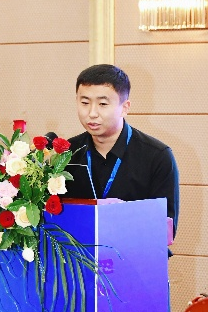
Project Name: Research on the Creep-Seepage Mechanism of Fractured Rock Mass in Coal Mine Goafs
Project Type: Youth Science Foundation Project (Class C)
Profile of the Project Leader: Wang Weinan, PhD in Mining Engineering, is a lecturer and undergraduate supervisor at the Institute of Disaster Rock Mechanics. His teaching and research center on green coal extraction, protection and utilization of water resources disturbed by mining, and the prevention and control of dynamic disasters in underground mines. He currently leads one project funded by the Liaoning Provincial Department of Science and Technology and another by the Liaoning Provincial Department of Education. As first or corresponding author he has published 14 papers in Chinese and international journals, 11 of which are indexed by SCI/EI, and he holds 11 authorized invention patents. In recognition of his work, he received the Third Prize of the Jiangsu Provincial Science and Technology Award.
Project Introduction: By using the independently developed multi-dimensional mechanical-seepage test system for fractured rock masses, the vermicular-seepage laws of fractured rock masses of different sizes under cyclic immersion water are clarified. By using CT scanning and three-dimensional reconstruction technology, the pore morphology and three-dimensional network structure evolution characteristics of fractured rock masses are studied. The project establishes the three-dimensional creep equation of fractured rock mass and the single seepage parameter model of double void medium considering the creep deformation of the block to reveal the vermicular-seepage mechanism of fractured rock mass. It also establishes an adaptive solution method for simulating the water storage performance of fragmented rock masses, constructs a numerical calculation model for water storage performance, reveals the spatio-temporal evolution mechanism of water storage coefficients, and provides a useful reference for the protection of mining water resources in ecologically fragile mining areas in the west.
.
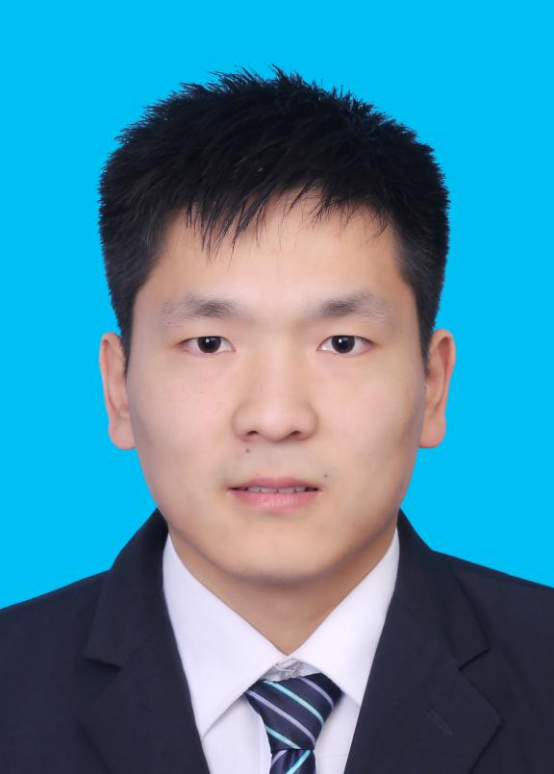
Project Name: Research on the Impact Mechanism and Regulation Method of Fluvial Sedimentary tile-like Overlying rocks
Project Type: Youth Science Foundation Project (Class C)
Profile of the Project Leader: Shi Tianwei, PhD in Engineering, is a lecturer and postgraduate supervisor at the Institute of Disaster Rock Mechanics. He specializes in the mechanism and prevention of coal-burst (rock-burst) hazards in underground coal mines. He currently leads three government-funded projects—one from the National Natural Science Foundation of China, one general project from the Liaoning Provincial Department of Education, and one from the Liaoning Provincial Department of Science and Technology—along with five industry-sponsored horizontal projects. In addition, he has participated in four national initiatives, including the National Key R&D Program and NSFC general projects. His work has earned one first-class and two second-class provincial/ministerial awards, and he has authored more than ten peer-reviewed papers and five granted national invention patents.
Project Introduction: The project takes the impulse mechanism and regulation methods of fluvial sedimentary tile-shaped overlying rocks as its theme. On the basis of clarifying the impulse type fluvial sedimentary tile-shaped overlying rock structure, it analyzes the deformation and fracture modes of the rock layer thickness mutation zone and the tip extinction zone. The project establishes a mechanical model of unequal-thickness rock beams and obtains the mechanical criteria for critical instability of overlying key layers. It also constructs a mechanical model of the tile-like overburden structure to explore the disaster-induced mechanism caused by the instability of the structural form evolution. Additionally, the project studies the reconstruction effect of roof pre-cracking on the stress transmission path of shingle-like overburden and its regulation mechanism on the energy storage and release characteristics of key layers, so forming a roof pre-cracking regulation method and providing theoretical guidance for the source control of rock burst under shingle-like overburden conditions.
.
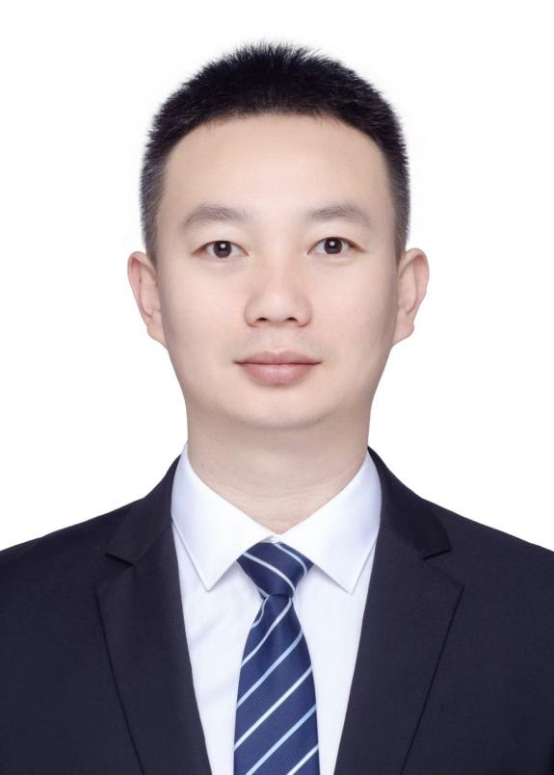
Project Name: Research on Physical Attack Defense Technology of Sensors for Intelligent Driving Vehicles
Project Type: Youth Science Foundation Project (Class C)
Profile of the Project Leader: Chen Yanfeng, PhD in Engineering, is a lecturer and undergraduate supervisor in the Faculty of Information. His research focuses on Internet-of-Things security, sensor-attack mitigation, lightweight artificial intelligence, and automatic control. He currently leads one National Natural Science Foundation of China Young Scientists Fund (Category C), one sub-project of the National Key R&D Program, and one Liaoning Provincial Science and Technology Joint Plan project (Natural Science Foundation—Doctoral Startup Grant). He has also participated in several national and industry-sponsored projects. To date, he has published more than ten SCI-indexed papers as first author.
Project Introduction: This project proposes a research topic on sensor physical attack defense technology in response to the security issues faced by intelligent driving vehicles under sensor physical attacks. The project takes into account the demands of intelligent driving vehicles in terms of real-time performance, security and reliability in the face of sensor physical attacks and proposes a sensor attack defense technology framework centered on lightweight spatio-temporal redundant data. On the basis of lightweight data algorithms, it realizes the detection, fusion and fault tolerance of sensor physical attacks, ensuring that intelligent driving vehicles can still operate normally when subjected to sensor physical attacks. The research results provide technical support for the safety of intelligent driving vehicles and play a promoting role in the development of the discipline.
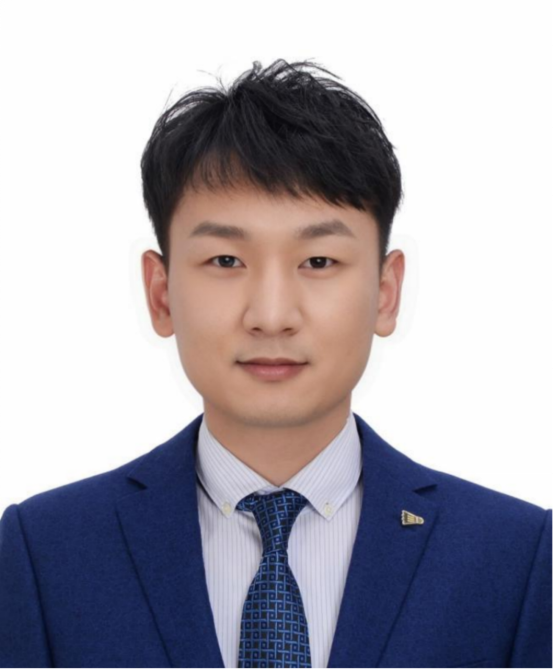
Project Name: Family and Career Trade-offs in the Context of Trade Liberalization: Mobile Share Estimation Based on Gender Skill Elements
Project Type: Youth Science Foundation Project (Class C)
Profile of the Project Leader: Chen Feng, PhD in Economics, is an assistant professor and postgraduate supervisor at the Li Anmin Institute of Economic Research and concurrently serves as deputy director of the Institute for Machine Learning and Big-Data Algorithms. His research centers on labor economics, public economics, and applied microeconomics. He currently leads one National Natural Science Foundation of China (Young Scientists Fund) project and one provincial and one municipal grant. His work has appeared in leading international journals such as the Journal of Public Economics, Journal of Environmental Economics and Management, Journal of Population Economics, Contemporary Economic Policy, and Economics of Education Review.
Project Introduction: Against the backdrop of an increasingly complex trade environment and a continuous decline in the birth rate, the issue of balancing family and career has increasingly become a key topic for the sustainable development of population and society. This project focuses on the behavioral adjustment mechanism under the conditions of an open economy. It builds more targeted policy impact measurement indicators based on gender skills elements, combines industrial structure and micro-individual data, and uses the mobile-share instrumental variable method for causal identification. It deeply explores the potential impact of trade policy changes on individual resource allocation and behavioral choices. The projects strives to provide a scientific basis for building a fertility-friendly society and promoting high-quality population development.
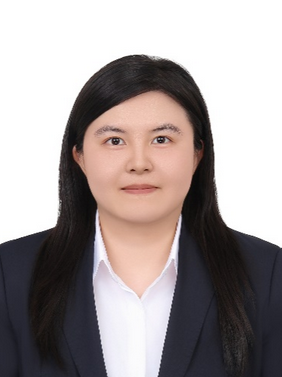
Project Name: Research on the Impact Mechanism of Ecosystem Co-evolution on the Emergence of Future Industries: From the Perspective of Plaque Dynamics
Project Type: Youth Science Foundation Project (Class C)
Profile of the Project Leader: Xu Jin, PhD in Management and post-doctoral fellow in applied economics, is associate professor and postgraduate supervisor at the business School and director of the Tieling Urban Development Institute of Liaoning University. Her research spans population ecology, industrial ecosystems, innovation management, and the platform economy. Her findings have been published in SSCI Q1 Top journals such as Technovation and in Nature-affiliated journals. She has been invited to present her work at the European Group for Organizational Studies colloquium, the annual conference of the European Academy of Management, and the 2025 INFORMS International Conference. She currently leads three provincial grants: the Liaoning Provincial Department of Education Science and Technology Innovation Team Project, the Provincial Philosophy and Social Science Planning Fund Project, and the Provincial Natural Science Foundation under the Science and Technology Plan.
Project Introduction: Future industries hold significant strategic importance for leading economic innovation and development, enhancing core competitiveness, and promoting high-quality national development. The future industrial ecosystem is characterized by multiple levels, high dynamics and complexity. The project leader's previous research results revealed that the theoretical framework and model methods of plaque dynamics can simultaneously capture the characteristics and collaborative interactions of participants at different organizational levels in the ecosystem and effectively depict the collaborative evolution of the industrial ecosystem. The research results of the project are conducive to identifying the influence mechanism of ecosystem co-evolution on the emergence of future industries. They will also have important theoretical expansion and practical application value for research on the emergence of future industries.